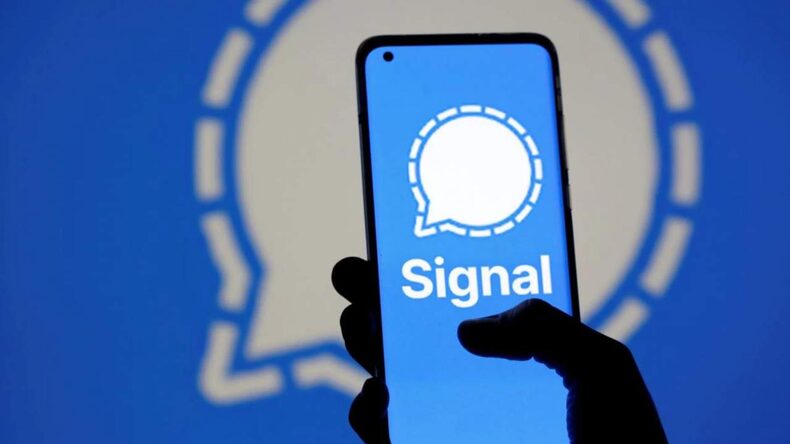Signal, the messaging service born in the 2010s, stands out for its features focused on user security and privacy.
In recent years, WhatsApp has managed to position itself as the instant messaging app Favorites of millions. However, there are other alternatives that may not be as well known.
One of them is signal which aims to guarantee the confidentiality of those who use it and which already has more than 40 million active users worldwide.
What is Signal?
Signal is a messaging and calling service that aims to provide private and secure communication. It is possible to send SMS, MMS and encrypted data messages there.
To ensure the security of messages exchanged, Signal has the Signal protocol which is a cryptographic protocol that provides end-to-end encryption on all chats taking place on the service.
It is also described as an application of open source meaning the code is publicly available so others can review it, check for vulnerabilities, and suggest improvements.

This application originated in the 2010s, when cybersecurity researcher Moxie Marlinspike launched two platforms based on the Signal protocol. One of them is TextSecure, a messaging app, and RedPhone, an app for encrypted calls. In 2014, the services merged and Signal came into existence.
Currently, the app is not owned by a technology company, but is developed by a non-profit foundation funded by donations and grants of people “who value privacy”, according to their website .
How Signal works
Signal works very similarly to other instant messaging services. Users can have individual or group chats, custom stickers, send photos, send audio, make voice and video calls . Additionally, you can detect contacts in your phonebook who also use the app.
To start using it, you must have a phone number. It is available for Android, iPhone and iPad although it is also possible to download a desktop version on Mac, Windows and Linux .
After downloading Signal, you will be asked to grant certain permissions (such as access to contacts) and verify your phone number via SMS. The next step is to create a security PIN to ensure account protection.
From this point on, you can start using Signal and interact with other users, whether in one-on-one or group chats.

What options does Signal have to ensure privacy?
Compared to other apps, Signal has several features that make it a benchmark in security and privacy.
One of them is the automatic destruction of messages after a while. For the moment, the application allows these communications to be deleted after 30 seconds, or even four weeks, depending on the settings chosen by the user.
The signal also allows blur images which are sent in order to hide the identity of others. This option can be especially useful when you are taking photos in public and want to protect the privacy of others.
The signal protocol, which provides end-to-end encryption latest generation in cats, is another of its most remarkable functions. End-to-end encryption is a process in which messages sent by a sender appear in an unreadable format, called ciphertext, and can only be decrypted when they reach the recipient’s device so that the recipient can read them .
The above helps protect user communications from start to finish, so that third parties cannot access and use this data. In fact, even Signal managers cannot access messages or calls that take place within the application.
Other networks, such as WhatsApp or Telegram, are characterized by the collection of various data such as telephone number, advertising data, approximate location, email, history of failed purchases and interaction with advertising. But this is not the case with Signal: it only uses users’ phone numbers.
Source: Latercera
I am David Jack and I have been working in the news industry for over 10 years. As an experienced journalist, I specialize in covering sports news with a focus on golf. My articles have been published by some of the most respected publications in the world including The New York Times and Sports Illustrated.


